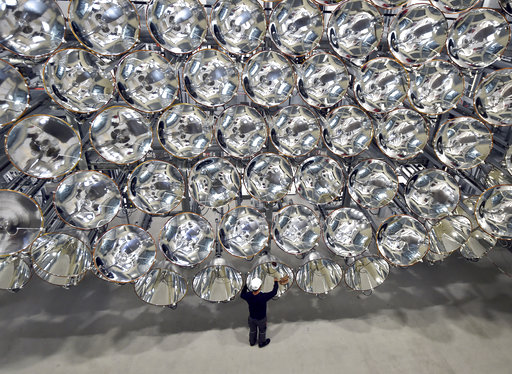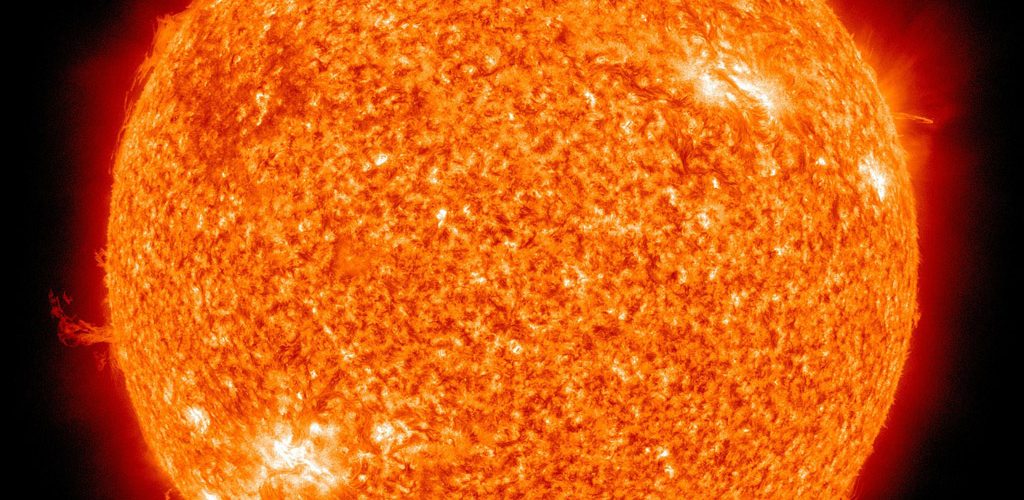German Aerospace Center’s solar research division just turned on world’s largest artificial sun Synlight. Though it is being called an artificial sun, it doesn’t really have anything with fusion energy project. Synlight is more like a huge light bulb or maybe a combination of a large number of light bulbs. The Synlight project is housed at German Aerospace Center’s facility in Juelich near Cologne.

Synlight consists of 149 xenon short arc lamps arranged in a honeycomb pattern. The spotlights cover only an 8×8 inch surface and heat it up to about 3000 degree Celsius. When turned on Synlight concentrates tremendous amount of power converging on that small area and the radiation is about 10,000 times more intense compared to the sunlight that hits earth. The one major difference between real sunlight and Synlight is that sunlight creates energy while Synlight consumes it greedily. Powering up the project for four hours consumes electricity equivalent to what a house with four members will require in a year.
Sunlight is in short supply at this time in Germany, but that should not come in the way of potentially revolutionary research in solar energy. The goal here is to understand solar radiation better and to find out ways of developing novel sources of fuel by exploiting solar energy. Bernhard Hoffschmidt, the director of DLR’s institute for solar research said that scientists working on the project are hoping to find and master a viable method for creating hydrogen by using solar energy. He also added that once such a method is discovered it will take them about a decade to adapt it for industrial usage.
Hydrogen is a very clean fuel that leaves no carbon footprint, but it also doesn’t exist in nature in large enough quantities. There are already some vehicles that use hydrogen as fuel, but hydrogen is now produced either from fossil fuels through methane reformation technique, or is produced by splitting water into its constituent elements; hydrogen and oxygen, but this process requires large amounts of electricity.
































Woooooow that is wonderful………